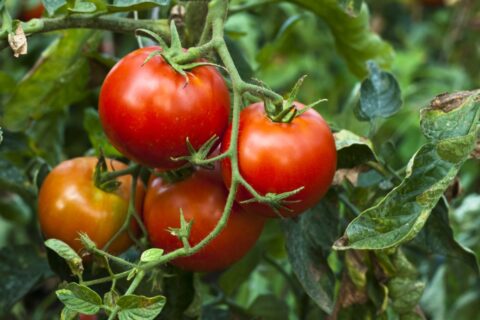Whether you love them or want to eradicate them from the Earth, you’ll probably see green beans on your Thanksgiving table this year.
And since you can’t avoid them, you may as well impress your relatives with this fun bean fact: the green bean is actually not a vegetable, but a fruit.
At least to a botanist, anyway.
“Fruits are structures that contain seeds,” Toby Adams, director of the Edible Academy at the New York Botanical Garden, said in an interview. “And a green bean is, basically, a pod that has seeds inside of it.”
Adams explained that the green bean is a “dry fruit,” which means that when it’s fully developed, the pod will dry out and crack open to reveal a mature seed. Then — fingers crossed — the seed will enter the earth, eventually germinating and growing more green beans. In fact, this is pretty much why the pod exists: to provide a vehicle for the seed’s dissemination.
The green beans we stir-fry and put into casseroles, though? Those are fruits that were picked immature, with the seed still sitting inside the pod. “But if you were in the garden and you … let those fruits fully develop,” Adams said, “the pod would eventually dry out.”

My dudes.
Credit: Shutterstock / azure
Then, you’d be left with a “shelf-stable” dried bean, freed of its papery pod and ready to be sold in bulk bins. But it’s unlikely that you’ll find mature green beans in bulk bins. Instead, they are made shelf-stable through canning.
The green beans we eat are immature, with the seeds still sitting inside the pod.
So beans are fruit. Cool, right? But what if, at the Thanksgiving table, your smartass cousin insists that the green bean can’t be a fruit because it’s a legume?
Please let them know that it’s both. The legume, in fact, is a type of dry fruit.
What, then, explains the pervasive myth that green beans are vegetables? Well, the terminology is all mixed up! In fact, the term “vegetable” isn’t really used by botanists at all. Instead, it’s used by grocers and others in the food industry, usually to identify produce that’s savory or used in savory recipes. (Culinary “fruits,” by contrast, are often sweet or used in sweet recipes.)
This strangely nebulous distinction has even had legal ramifications. In 1893, a fruit importer argued before the Supreme Court that tomatoes should be classified as fruits, not as vegetables as the Port Authority of New York had decreed. (The importer hoped to avoid the 10% tax imposed on imported vegetables at the time.)

To-may-to, to-mah-to; fruit, vegetable.
Credit: Shutterstock / David Orcea
Now, tomatoes are fruits, botanically speaking. (In fact, they’re berries!) But in this case, the Supreme Court decided that tomatoes were still vegetables in a culinary sense — mostly because the terms “fruit” and “vegetable” didn’t have stable definitions in the world of commerce.
From the decision:
Botanically speaking, tomatoes are the fruit of a vine, just as are cucumbers, squashes, beans, and peas. But in the common language of the people, whether sellers or consumers of provisions, all these are vegetables which are grown in kitchen gardens, and which, whether eaten cooked or raw, are, like potatoes, carrots, parsnips, turnips, beets, cauliflower, cabbage, celery, and lettuce, usually served at dinner in, with, or after the soup, fish, or meats which constitute the principal part of the repast, and not, like fruits generally, as dessert.
This attitude prevails today. Tomatoes are still widely thought of as vegetables, despite being the poster children of the “actually, it’s a fruit” mini-movement. Same with zucchini, peppers, avocados and, of course, beans. The tariff in question is long gone, but the court case, Nix vs. Hedden, is still upheld today — and has, as Business Insider points out, affected numerous other cases involving taxation, classification, and the “common language” people use to refer to certain goods and services.
But you, reader, have received your botanist awakening, and now you’re the wiser. When you set your flawless green bean dish on the Thanksgiving table this year, you can say confidently to your sure-to-be-impressed family: “Who wants pod-and-seed casserole?”
They’ll love it. Even your smartass cousin.
UPDATE: Nov. 6, 2023, 3:38 p.m. AEDT This article was originally published in Nov. 2017, and has since been updated in Nov. 2023.
